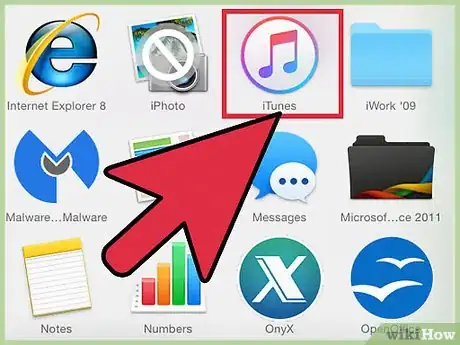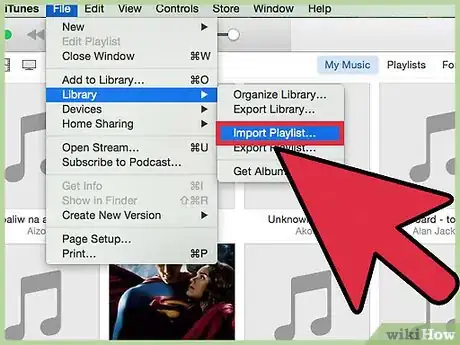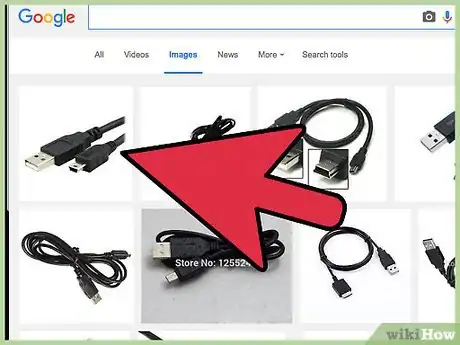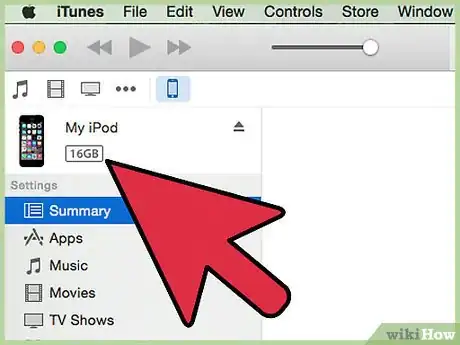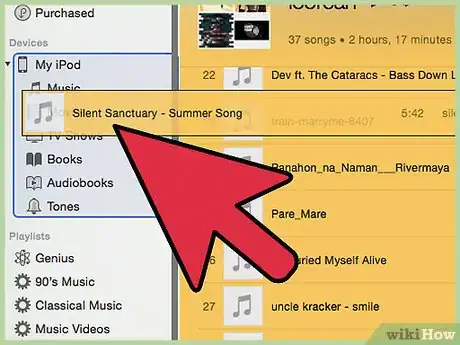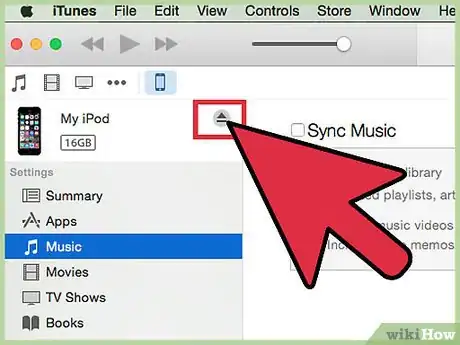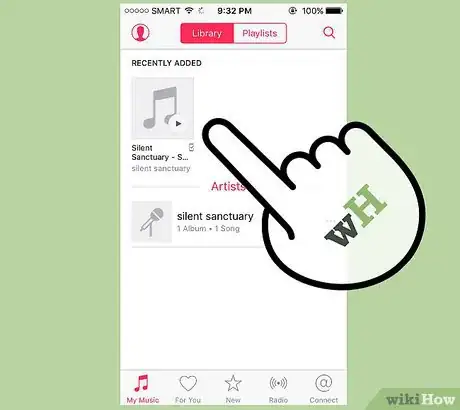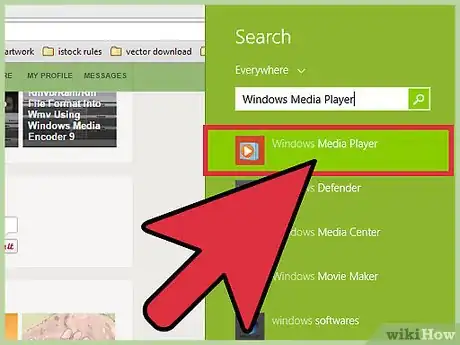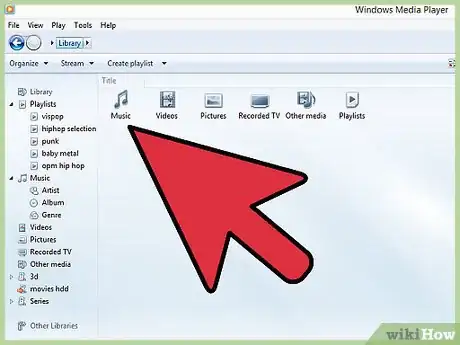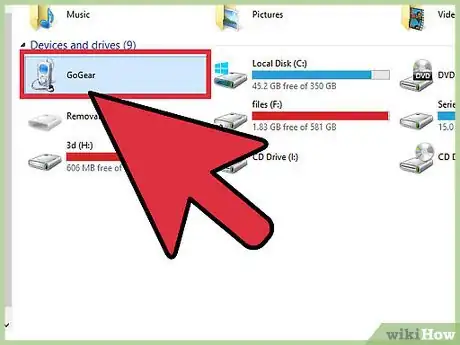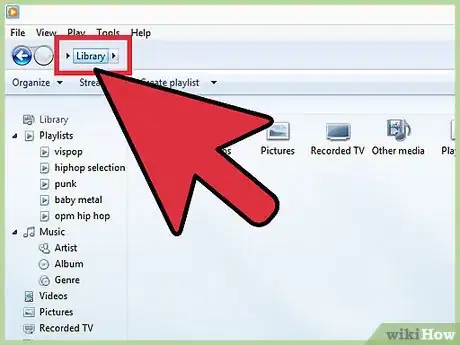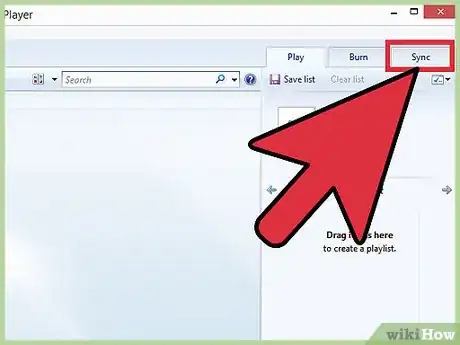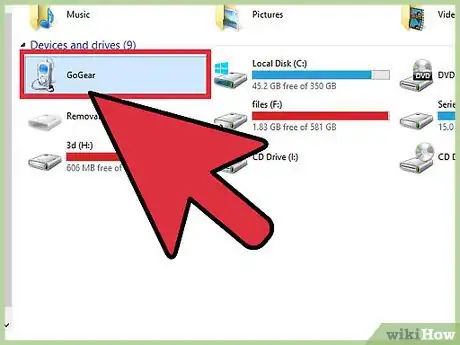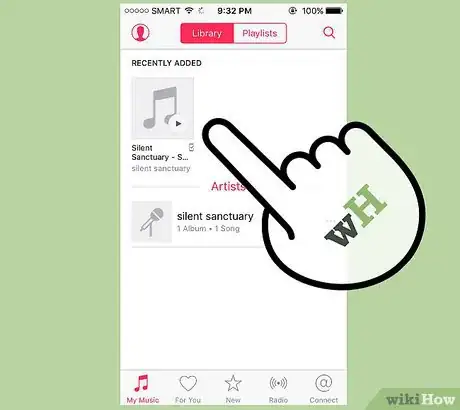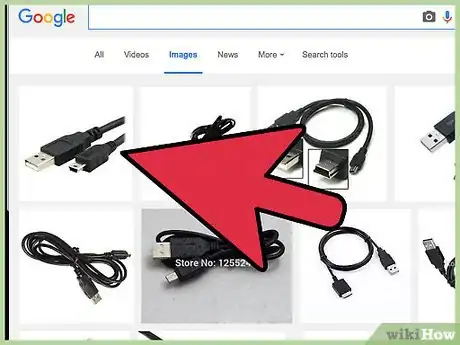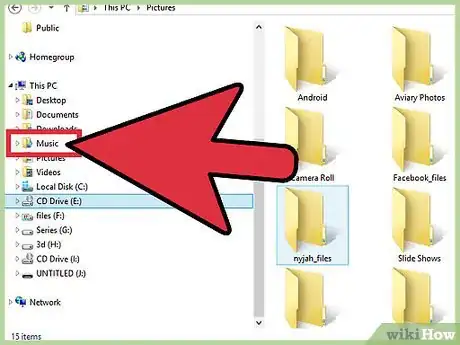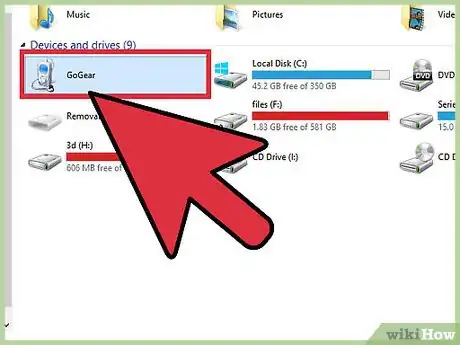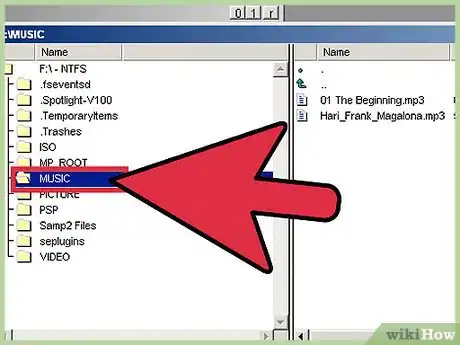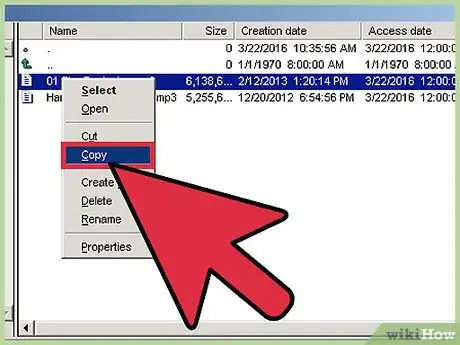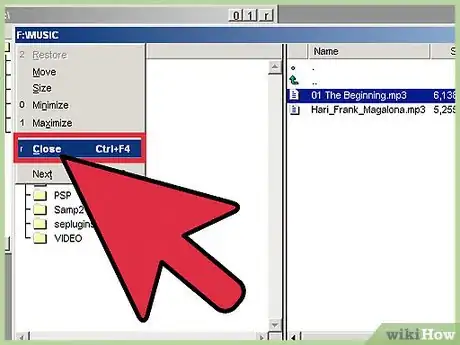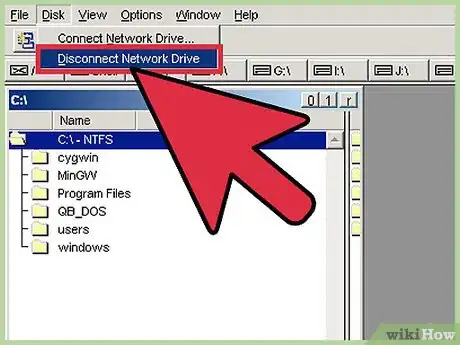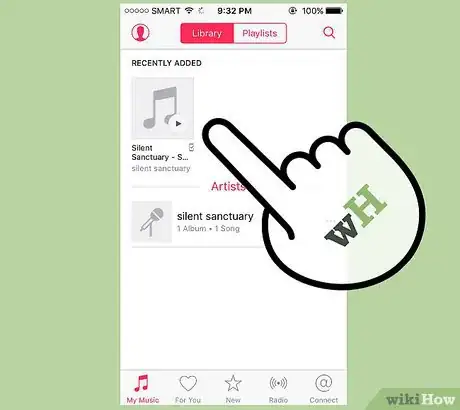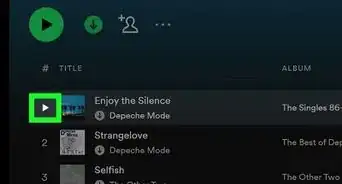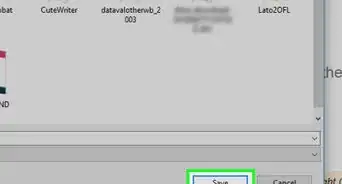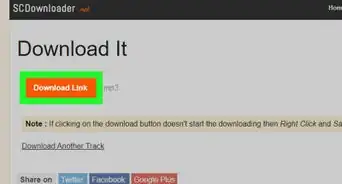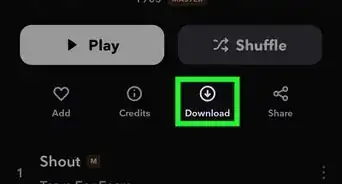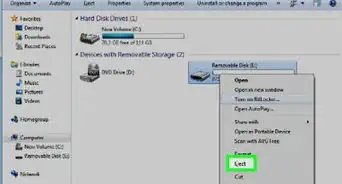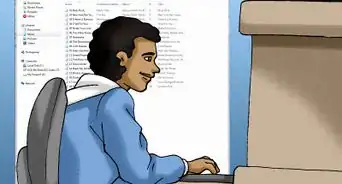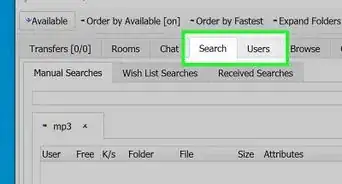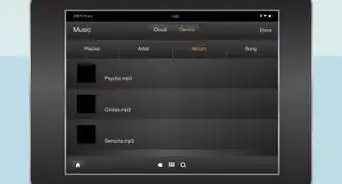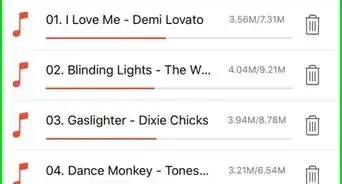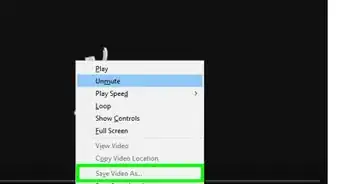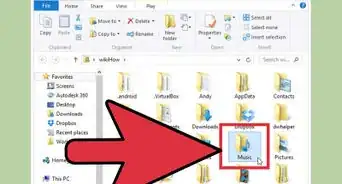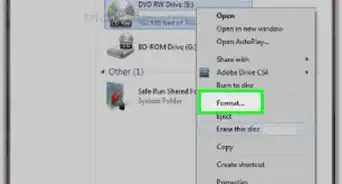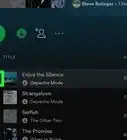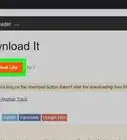This article was co-authored by wikiHow staff writer, Nicole Levine, MFA. Nicole Levine is a Technology Writer and Editor for wikiHow. She has more than 20 years of experience creating technical documentation and leading support teams at major web hosting and software companies. Nicole also holds an MFA in Creative Writing from Portland State University and teaches composition, fiction-writing, and zine-making at various institutions.
This article has been viewed 676,082 times.
Learn more...
MP3 players give you the ability to play music wherever and anywhere. Whether you have an iPod, SanDisk, Coby, or any other type of player, transferring music from your computer is a pretty straightforward process. Some players come with their own software, while others rely on programs that may already be on your computer. While the iPod only works with iTunes, other Mp3 players are typically less restricting.
Steps
Using iTunes with an iPod or Other Devices
-
1Install iTunes. iTunes is built into the Mac operating system, but Windows users will need to download and install the software from http://www.apple.com/itunes/download.
- Click “Download Now” to download the setup software. Once the software is downloaded, run the installer and follow the on-screen instructions.
- If you're using Internet Explorer and run into trouble downloading iTunes, you may need to adjust the filter level of your pop-up blocker. [1] Go to Internet Explorer's “Internet Options” menu and click “Privacy.” Click “Settings” beneath Pop-up Blocker and set the filter level to “Medium.”
-
2Get your music into the iTunes Library. The first time you run iTunes, it will scan your computer for music and add it to the Library. If you've added more music since then or don't see your files in the Library, there are two other ways to do this:
- Drag the folder into iTunes. If you're using a Mac, open Finder and click Music, then drag-and-drop the desired folders onto the iTunes library. Using Windows, press ⊞ Win+E to open the File Explorer, located your music folder, and drag-and-drop onto the iTunes Library.[2]
- The other way (on either operating system) is to open the File menu and click “Add to library.” Select the folder or folders you'd like to add and click “Ok.”
- If you don't know where your music files are stored on your Windows computer, press ⊞ Win+F to open Windows Search. Type
*.mp3(or.ogg,.flac,.mp4, etc) in the search box and press ↵ Enter. When the files are returned, right-click on one and choose “Properties.” The full path to the file will appear next to Location.
Advertisement -
3Connect the Mp3 player to the computer. Using the USB cable that came with your device, plug your device into your computer. If it's your first time doing this, your computer should begin to install drivers automatically.
-
4Find the Mp3 player in iTunes. As long as your Mp3 player is compatible with iTunes, it will show up in the software automatically. If you run into any issues, make sure you're using the latest version of iTunes. [3]
- iTunes 10 and below: Your device will appear on the left side of the screen under the “Devices” menu. It may show up as the manufacturer of your Mp3 player (i.e., “Sony Mp3”) or your name (“Maria's iPod”). [4]
- iTunes 11: On the upper right corner of iTunes, an icon will appear near the iTunes Store link. It will have a small icon representing an Mp3 player with the name of your player next to it.
- iTunes 12: On the upper left corner of iTunes, click the Mp3 player icon.
-
5Drag-and-drop files from the Library to your Mp3 player. You can click and drag songs to the device individually or several at a time.
- If you're not able to drag music to your device, double click on your device and select “Summary” from the left sidebar. In the menu that appears, scroll down to Options and put a check in the box that says “Manually manage music and videos.”
- If you're still running into trouble, try disconnecting, then reconnecting your Mp3 player. If that doesn't help, try restarting iTunes.
-
6Eject your device. Select your device in iTunes and press ⌘ Cmd+E if you're on a Mac, Ctrl+E if you're using Windows. Unplug your player.
-
7Wait for your Mp3 player to scan the new files. This should happen automatically once you've disconnected it from the computer. If the files don't show up in your Music menu, restart the device to initiate the scan.
Using Windows Media Player in Windows 7, 8.1 or Vista
-
1Open Windows Media Player. This will not work with an iPod, but it should for most other Mp3 players. Click Start, and type the word Media into the search box. When Windows Media Player appears in the results, click it to open.
-
2Add music to the Media Player Library. If you don't already use Media Player, you'll need to add your music files to the library.
- Click “Organize, then “Manage Libraries.” Select “Music.” [5]
- In the Music Libraries Locations dialog, select the folder where your music is stored and click “Include Folder” to add it to Media Player.
- If you don't know where your music is stored, you can search your computer by pressing ⊞ Win+F to open Windows Search. Type
*.mp3in the search box and press ↵ Enter. When the files are returned, right-click on one and choose “Properties.” The full path to the file will appear next to Location.
-
3Connect the Mp3 player to the computer. Using the USB cable that came with your device, plug your device into your computer. If it's your first time doing this, your computer should begin to install drivers automatically. If your Mp3 player came with a CD or instructions on how to install drivers, follow the instructions specific to your player's manufacturer.
-
4Choose a sync method. If this is your first time connecting your Mp3 player with Windows Media Player open, it will sync your device based on the method it believes works best with your device. [6]
- Automatic Sync will be selected if your Mp3 player has more than 4GB of storage and everything in your library can fit on the device. Note that if you stay with Automatic Sync, your device will be automatically synced with your Windows Media Player library every time you plug in your device.
- Manual Sync will be selected if your player has less than 4GB of storage and not all of your music will fit.
- To switch from Automatic Sync to Manual (or vice versa)
- Click the “Switch to Library” button in the upper right corner of Media Player. Click the Sync tab, then the “Sync Options button” (the one with the checkmark).
- Click “Set up Sync” and look for the Device Setup area. Remove the check next to “Sync this device automatically” if you prefer to sync manually, or add a check if you want the process to be automatic.
-
5Click “Sync” to begin adding music to your mp3 player. Your Mp3 player shows up at the top of this tab, likely called something like “My Media Device.” Select and drag the desired music files to your Mp3 player.
- If you chose to sync automatically, you don't have to complete this step—your files are already syncing.
-
6Safely disconnect your Mp3 player once the files have copied. You can do this by clicking on your USB device in the system tray (the lower right hand corner of your screen, near the clock) and selecting “Safely eject hardware.”
-
7Wait for your Mp3 player to scan the new files. This should happen automatically once you've disconnected it from the computer. If the files don't show up in your Music menu, restart the device to initiate the scan.
Transferring Manually in Windows
-
1Connect the Mp3 player to the computer. Using the USB cable that came with your device, plug your device into your computer. If it's your first time doing this, your computer should begin to install drivers automatically. If your Mp3 player came with a CD or instructions on how to install drivers, follow the instructions specific to your player's manufacturer.
-
2Find the folder on your computer that contains your music. Launch the File Explorer in any version of Windows by pressing ⊞ Win+E and navigate to the folder which contains your music.
- If you don't know where your music files are stored on your Windows computer, press ⊞ Win+F to open Windows Search. Type
*.mp3(or.ogg,.flac,.mp4, etc) in the search box and press ↵ Enter. When the files are returned, right-click on one and choose “Properties.” The full path to the file will appear next to Location.
- If you don't know where your music files are stored on your Windows computer, press ⊞ Win+F to open Windows Search. Type
-
3Open another File Explorer window to view your Mp3 Player. Press ⊞ Win+E and expand the Computer menu on the left side of the screen. Double-click on your Mp3 player, which should be called something like “Removable Disk” or “Mp3 Player.”
-
4Find the Music folder on your Mp3 player. Check the instructions that came you're your device for the exact place to store your music files, but most players have a folder called “Music.” Once you've located the folder, open it by double-clicking.
-
5Drag the songs to the Mp3 player. In the first File Explorer window (the one open to the music folder on your PC), select the files you want to transfer. Most Mp3 players will allow you to drag an entire folder (or folders) to the device, so don't panic if you you're your files neatly organized by artist. Highlight the files drag them to the other File Explorer screen (the one open to the Music folder on your Mp3 device).
-
6Close the File Explorer windows. Make sure the songs are copying before you do this.
-
7Safely disconnect the Mp3 Player. You can do this by clicking on your USB device in the system tray (the lower right hand corner of your screen, near the clock) and selecting “Safely eject hardware.”
-
8Wait for your Mp3 player to scan the new files. This should happen automatically once you've disconnected it from the computer. If the files don't show up in your Music menu, restart the device to initiate the scan.
Community Q&A
-
QuestionDo you have to buy music on iTunes to download music to an MP3?
 Community AnswerNo. There are several different converters available online.
Community AnswerNo. There are several different converters available online. -
QuestionHow can I download music to an MP3 for free?
 Community AnswerAll of the programs in this article are free. If you want to know how to download music to your computer for free, you can find some advice for iTunes in How to Download Free Music to iTunes. Other programs may have similar but slightly different steps, however. You have to download music to your computer first, then from the computer to the MP3 player as this article describes.
Community AnswerAll of the programs in this article are free. If you want to know how to download music to your computer for free, you can find some advice for iTunes in How to Download Free Music to iTunes. Other programs may have similar but slightly different steps, however. You have to download music to your computer first, then from the computer to the MP3 player as this article describes. -
QuestionWhy is the volume so low after loading MP3/WMA files?
 Community AnswerIt's possible that the link you downloaded has altered audio. I would try to find a new link and download another version.
Community AnswerIt's possible that the link you downloaded has altered audio. I would try to find a new link and download another version.
References
- ↑ https://support.apple.com/en-us/HT203345
- ↑ https://support.apple.com/kb/PH20507?locale=en_US
- ↑ https://support.apple.com/en-us/HT204095
- ↑ https://support.apple.com/en-us/HT203060
- ↑ http://windows.microsoft.com/en-us/windows/add-items-to-media-player-library#1TC=windows-7
- ↑ http://windows.microsoft.com/en-us/windows/set-device-sync-media-player#1TC=windows-7
About This Article
1. Open iTunes.
2. Connect the MP3 player to the computer.
3. Click the MP3 player in iTunes.
4. Drag-and-drop files to the player.
5. Eject the player.
